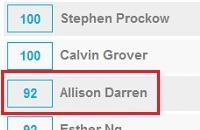Top candidates are becoming more and more invisible to recruiters according to a recent report from the Harvard Business School. HR systems are increasingly turning away qualified candidates with rejection letters; and hiding their applicant tracking system (ATS) profiles from recruiters. The result is a continually shrinking pool of qualified applicants.
Applicant tracking systems are great at managing the talent pool from resume review to interview. What is needed more than ever is artificial intelligent recruiting systems that will help find great candidates that were invisible before.

Before COVID, only 20% of new hires came from the efforts of recruiters. Referrals and other means accounted for the other 80%. With the Great Resignation and the Great Reshuffling, we will see the efforts of recruiters becoming even more futile unless changes are made.
Job seekers are become more aware that landing a new job is a numbers game. What used to be on average 100 people applying for a job turned into over 200. And now with COVID and the Great Resignation taking their toll, companies are receiving close to 400 applicants per job. Many are not qualified, requiring recruiters to sift through many more resumes to find the few that could be a match for the job.
The Harvard Business School report coins the term “hidden worker” as qualified people who want a job and are applying for jobs, but are not visible to recruiters through their ATS. It is a group of people who are finding it more and more difficult to continue their existing career by finding a new job, or move to a new career. During the Great Recession a similar problem came to bear. Except, now, there are many more jobs that are going vacant.
Who are these hidden workers? Consider this. Normally there are 160 million people in the USA workforce. The rest of our population are children, in school, or retired. The potential hidden worker population is calculated to be 26 million according to the Harvard Business School report.
These hidden workers are the ones increasingly being rejected by HR systems.
More than 50% of companies reject a resume simply because there are gaps in employment greater than 6 months. This accounts for 30% of rejections. A gap in employment could come from going back to college for an advanced degree, family reasons, taking a sabbatical, or dealing with a pandemic or illness (i.e., COVID).
Not having enough years of experience account for 36% of rejections. For example, if a job posting requires 5 years of experience, and a candidate has 4.5 years.
The reasons for rejections continue. Not having a high enough degree 29% (even though no current employees working a similar job have a college degree), not mentioning a specialized credential with the exact words specified 29%, having too many or not enough jobs 26%, exact skill keywords referenced in resume 22% (similar skills do not count). And, there are many more reasons cited.
The result is rejecting qualified applicants when there is a great need for workers.
The Harvard Business School report pointed out six key areas that matter most to employers: attitude and work ethic, productivity, quality of work, employee engagement, attendance, and innovation.
How do the hidden workers compare to the traditional talent pool? 70% of experienced executives indicated that hidden workers cost the same or less to hire compared to traditional sources of talent.
Importantly, hidden workers outperform their traditional hire counterparts in these six key areas by double.
Almost all companies surveyed in the report realize that qualified applicants are filtered out of the hiring process simply because they don’t match the exact requirements of the job description.
What happens is recruiters don’t read resumes, and job applicants don’t read job descriptions anymore. The average time a candidate reads a job description is 50 seconds. It’s been noted that recruiters spend about 6 seconds reviewing a resume. What’s more, recruiters often disable a job post when more than 100 applicants apply, essentially hiding any qualified applicants that are late to apply.
Job seekers are learning the best way to get a new job is to apply to as many jobs as possible. The result is what used to be 100 people applying for a job on average turned into over 200. And now with COVID and the Great Resignation close to 400.
Because job seekers don’t really read job descriptions, recruiters recycle job descriptions. New required skills are tacked on, without removing older requirements or modifying knock out questions.
The result of tightening requirements means more rejections of qualified applicants, and a smaller pool of candidates. To the point that the only people able to pass the ATS screening process will be current employees of a company. Well, almost…
There is the humorous story of the CEO of a certain corporation bemused by continually being told there were no good candidates to be had. As a test, he applied to a C-level job opening at his own company that he thought he would be a good match. He of course changed his name on the resume. He received a rejection letter.
What’s worse, is once a person is rejected from a job application, they are often blacklisted from applying to any jobs in the future. Further reducing the available applicant pool. Relegating this person to the hidden worker list.
Job descriptions get reused when the position becomes vacant again simply because there doesn’t seem to be a need to update the description. Yet, there very often is a reason to update when for example there is a new manager with a new vision and new goals. This change is very often not noted in the text of the description.
Most job seekers think every resume is read by recruiters, so they don’t worry so much about how the robotic gatekeepers will understand their resume. And their resume gets rejected because their resume is not an exact match.
This disconnect leads to unintentional bias.
Because job descriptions are being recycled and often years old, it contains requirements that may not just be out of date, they may include a language bias that would exclude diverse candidates. Diverse means not white male. As the vast majority of managers in the past have been white males.
Examples of this is language that is localized to a specific culture, gender biased, containing corporate jargon words, etc. All issues that discourage women from applying.
Importantly, people who are often categorized as “diverse” have not had the opportunities for advancement as traditional employees because of outright prejudice or unconscienced bias. When simply comparing experience to experience, the traditional candidate will win out. Excluding the diverse candidate. Further excluding the person from gaining senior level experience. Relegating the person to become a hidden worker.
Instead, search for a person that may not have the exact experience. Someone who’s work experience has prepared them for the next step. They may need training or time to get up to speed. As earlier noted, their performance is often double of someone who does have the exact required qualifications. The result is a win for both employer and employee.
We all know the cost of replacing experienced employees. Hidden workers have double the retention lowing hiring costs.
Women are a large portion of the hidden worker population. Why?
As mentioned earlier, a person could become a rejected hidden worker just for taking a break from their career or not having the exact required qualifications.
Women are more often asked to take a break from a career to care for family or other very valid reasons.
Women in the past (and now) are often overlooked for promotions. This does not mean they don’t have relevant experience or training. Maybe they were a manager with an MBA, just not a senior manager.
Most hiring teams over exaggerate their requirements. For example, by adding on requirements to the description that are currently not part of the job, and in the future will not be required. Basically turning “nice to haves” into “must haves”. This is an example of padding a job description that results in excluding more people than necessary.
Reflect on a finding from The Harvard Business School report on how the language in a job description could increase bias, “…research indicates that women tend to apply only when they feel confident, [and believe] they meet all the criteria stipulated for a position, while men believe they are entitled to apply if they meet a mere 60% of the requirements.”
With the tightening of available labor (and the need to reduce costs), many companies are turning to technology to work alongside and augment their current workforce to fill the gap of not having enough people working for them. The result is a need for current employees to train on these new advanced systems.
What happens is a spiraling of new requirements and a tightening of the perceived available workforce. When in reality, there are many people who are qualified.
When a new applicant applies, they are rejected for not having the new required technical skills they did not need to use in their current or past work. What’s more, these technical skills may be unique to the company taking the job applications.
This results in more people being rejected further reducing the available labor pool. Resulting in more productivity being required from existing employees. More technology being added. Resulting in more potentially qualified people being rejected for not having the ever-increasing required skills.
A suggestion is to simply train new hires in the same way as current employees to fill the skills gap.
Mosaictrack was designed using artificial intelligence to predict who would be asked to interview. This is accomplished by understanding the concepts and ideas in a job description and each resume, in the same way a person would.
Most recruiters get an interview request 5% to 10% of the time when they submit a set of resumes to a hiring team using just their ATS. Recruiters who use Mosaictrack with their ATS get an interview request 50% to 80% of the time.
Having an accurate and up to date job description is very important. When hiring teams know how Mosaictrack works, they are very happy to work with recruiters to make their descriptions accurate, readable, and importantly up to date.
This is a win for finding and hiring these hidden workers and help meet diversity goals. Mosaictrack is able to read all resumes submitted for a job. And provide a short list of the best qualified candidates to recruiters.
Mosaictrack does help analyze job descriptions by comparing them to other similar descriptions. Find words and concepts that are meaningful, negative, positive, and those corporate jargon words. Mosaictrack even offers suggestions to change these bothersome words.
And, Mosaictrack offers a chatbot for job seekers to answer questions day and night about the company, products, and help find jobs. It will suggest matching jobs by comparing a job seeker’s resume to all open jobs with an AI search. Help prepare the candidate for an interview by pointing out their strengths to build confidence. Help fix any problems with their resume before they apply to a job. And allow them to apply with the click of a button.
The best part is Mosaictrack seamlessly integrates with your ATS. Find matching candidates in Mosaictrack and manage them with your ATS.
Our goal is to save time finding resumes, allowing recruiters to spend more time connecting with candidates and hiring teams. Meet your diversity goals. And, hire hidden workers!














